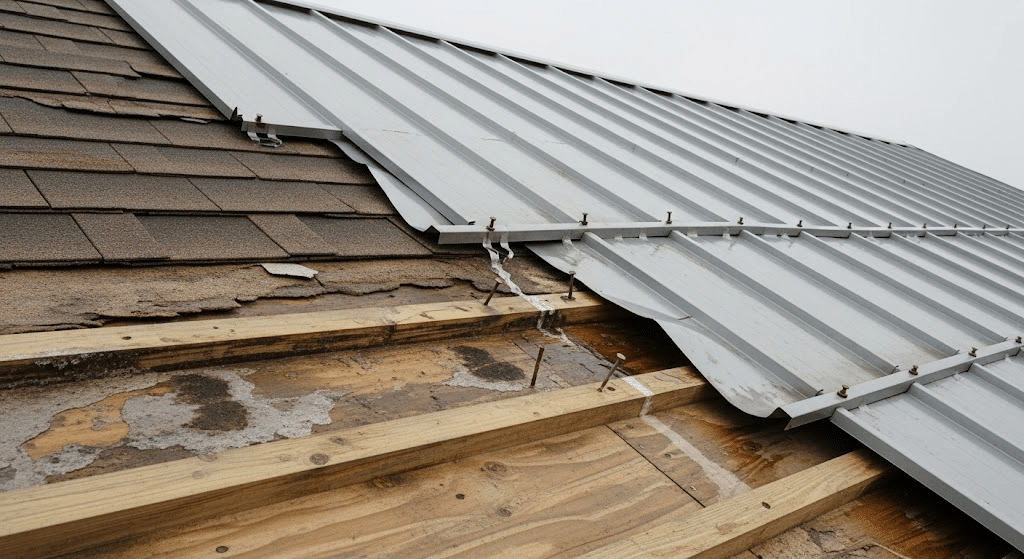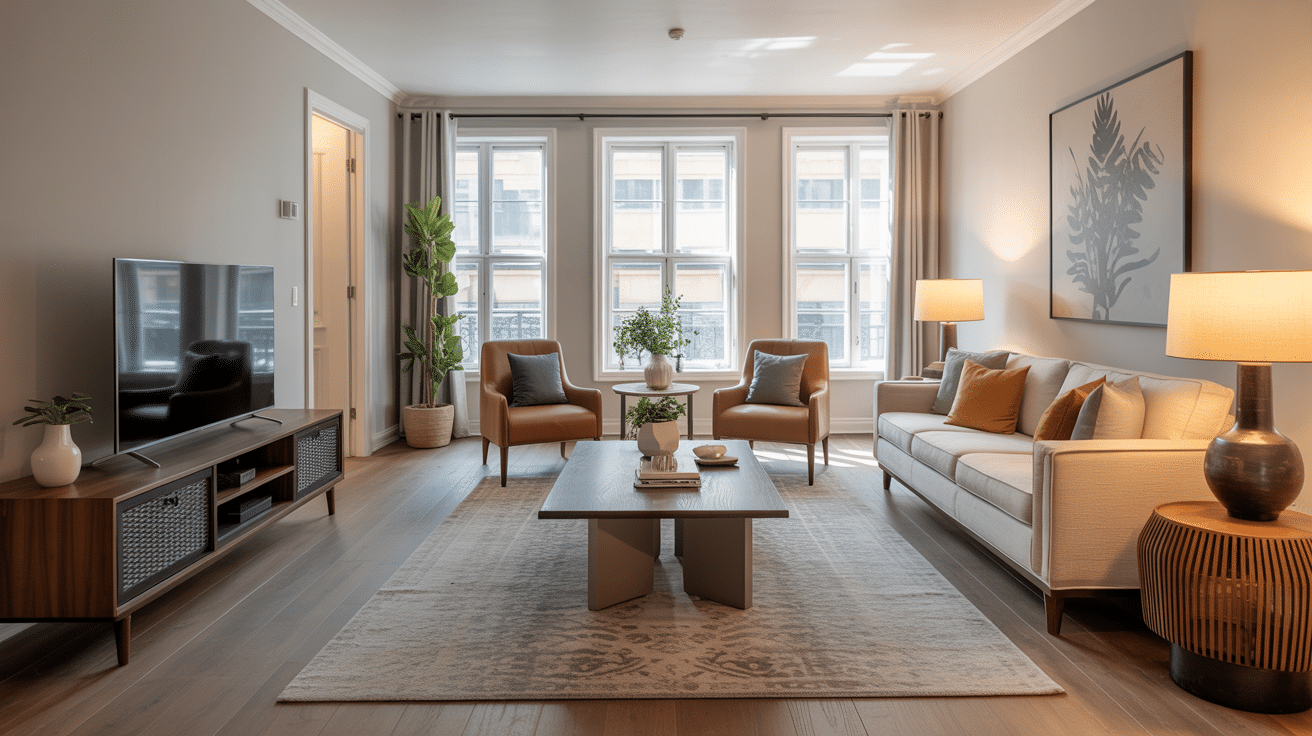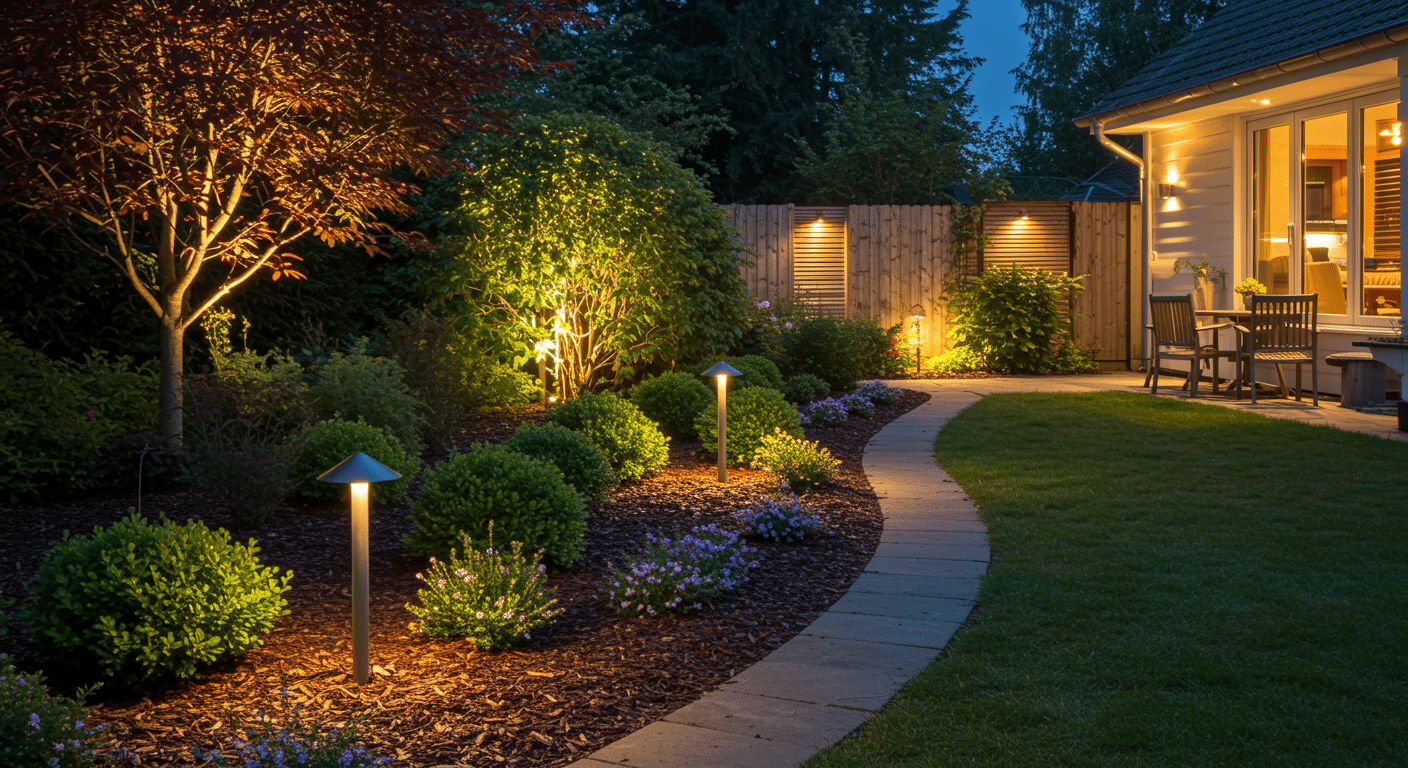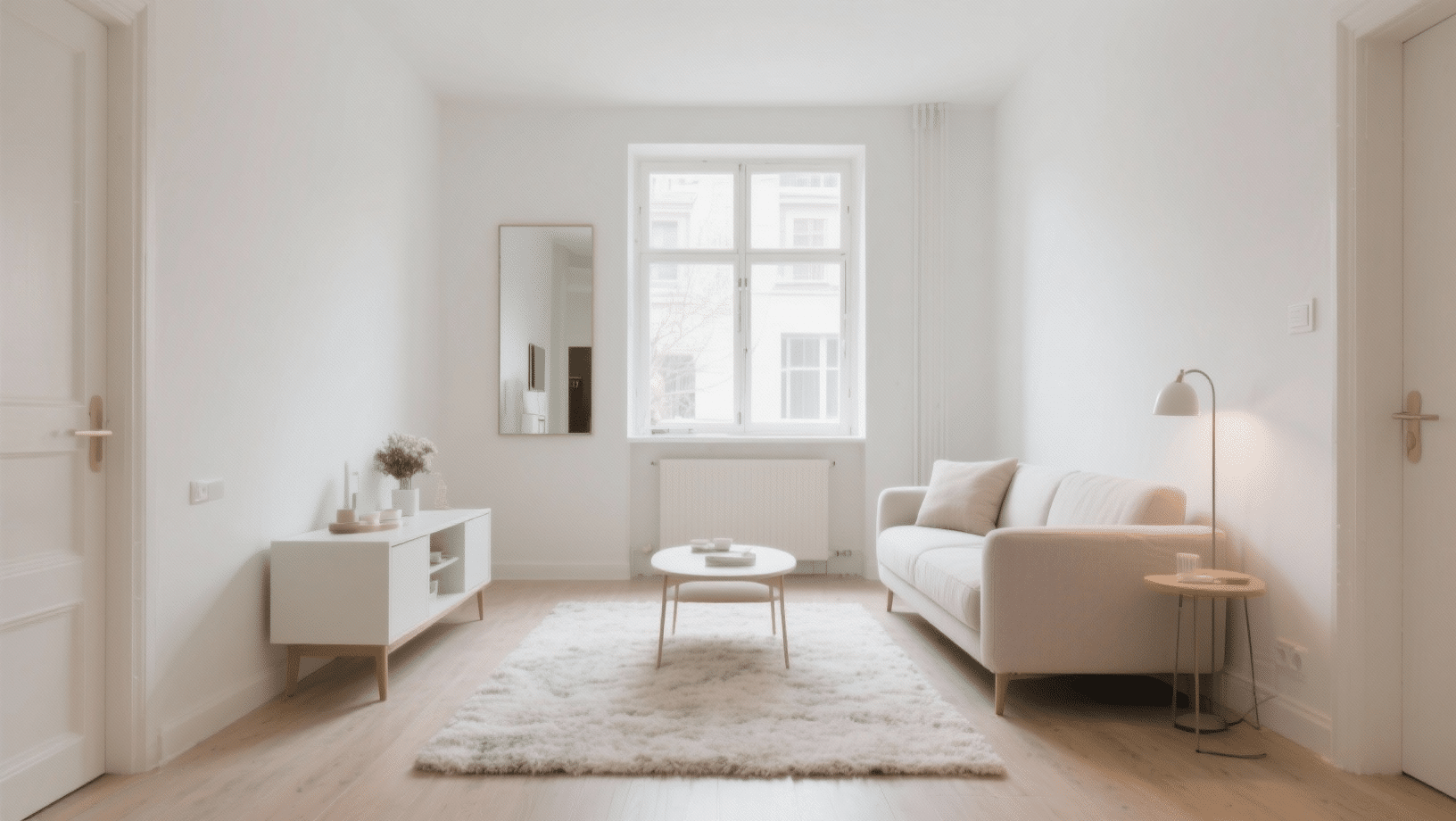Installing a metal roof over your existing shingles sounds like a smart move. I get it, you save money on tear-off costs and speed up the whole process.
Plus, your home gets that fresh, modern look everyone’s talking about. But here’s what most contractors won’t tell you upfront.
This seemingly efficient approach brings its own set of metal roof over shingles problems that can turn your dream project into a nightmare.
I’m going to walk you through the real challenges you need to know before making this decision.
Key Considerations Before Installing Metal Roofs
Before metal roof over shingles problems arise, I even think about putting metal over my existing shingles, there are several critical factors I need to evaluate. These considerations can make or break the success of my project.
- Structural Assessment: I confirm with a structural engineer that the roof frame can support the added weight of metal roofing plus existing shingles, especially for older structures. Excess load may cause safety risks and costly repairs.
- Number of Shingle Layers: Most building codes allow metal installation over one layer of shingles, but some permit two layers, depending on location. If multiple shingle layers exist (usually more than two), it is usually mandatory to remove the old roofing down to the deck before installing metal.
- Roof Condition: My existing shingles and roof deck need to be in good condition with no signs of water damage or rot. Any soft spots, missing shingles, or moisture problems need fixing before I add metal on top. Installing over damaged materials will only hide issues that will get worse over time.
- Climate and Ventilation: Proper ventilation is vital to prevent moisture buildup between layers. In humid climates or areas with temperature swings, poor ventilation can create condensation that leads to mold and rot. My attic ventilation system must be working perfectly before I consider this installation method.
Why People Install Metal Roofs Over Shingles?
I understand why this approach appeals to so many homeowners; the benefits seem apparent at first glance. The biggest draw is cost savings since I can skip the expensive tear-off process that often adds $3-5 per square foot to my project.
You can also save time because installation goes much faster when I don’t have to remove old materials first.
From a practical standpoint, I avoid the mess and disruption of a complete tear-off.
No debris cleanup, no risk of damage to my landscaping, and no need to worry about the weather during the removal process. Many contractors pitch this as an environmentally friendly option since I’m not sending old shingles to the landfill.
I’ve also heard that adding a second layer can improve insulation and reduce noise from rain or hail. Some homeowners believe it provides extra protection against leaks. The marketing makes it sound like I’m getting double the protection for less money.
Problems with Metal Roofs Over Shingles

When you install a metal roof over existing shingles, several serious issues can develop that many homeowners don’t see coming. Let me break down the most common problems you’ll face.
1. Moisture Retention and Rot Risk
The biggest issue is moisture getting trapped between your old shingles and the new metal roof. When water vapor can’t escape properly, it creates the perfect environment for wood rot and mold growth.
This hidden damage can weaken your roof structure over time without you even knowing it’s happening.
2. Uneven Surfaces Affecting Metal Panel Alignment and Integrity
Your old shingles create bumps and dips that make it nearly impossible to install metal panels perfectly flat. These uneven surfaces cause gaps, poor seals, and stress points that can lead to leaks.
The metal panels may also buckle or warp because they can’t lie flat against the irregular surface.
3. Fastener Loosening Over Time
Since the shingles underneath create an uneven base, your metal roof fasteners don’t distribute weight evenly. This uneven pressure causes screws and nails to work loose over time.
Once fasteners start failing, you’ll get leaks and potentially dangerous loose panels.
4. Hidden Shingle Decay
Your old shingles don’t stop aging just because you covered them with metal. They continue to deteriorate, curl, and break down underneath. This ongoing decay can create voids and weak spots that compromise your entire roofing system’s stability.
5. Building Code and Warranty Conflicts
Many local building codes require complete shingle removal before metal installation. If you skip this step, you might fail inspections or face legal issues.
Additionally, most metal roofing warranties become void if you install over existing shingles, leaving you with no protection if problems arise.
What Are Better Alternatives?
| Alternative | Key Benefits |
|---|---|
| Full Shingle Tear-Off | Proper ventilation, cleaner finish, and full warranty eligibility |
| Architectural Asphalt Shingles | Budget-friendly, layered aesthetics, good weather resistance |
| Metal Over Synthetic Underlayment | Amplified energy efficiency, moisture control, quieter interior |
| Structural Underlays (Battens) | Airflow and drainage gap, reduced heat buildup, extended roof lifespan |
When to Avoid Metal Roofs
Knowing when to avoid this installation is crucial because metal roof over shingles problems like hidden rot, leaks, structural stress, and ventilation failures can turn short-term savings into major long-term costs.
- I should never install metal over shingles if my roof is over 20 years old or shows any signs of damage, rot, or water stains. These underlying problems will only get worse when hidden under metal.
- Complex rooflines with multiple valleys, dormers, or penetrations create too many potential leak points that become nearly impossible to seal properly with layered roofing.
- When my attic lacks proper ventilation or has poor airflow, it sets the stage for serious moisture problems that can lead to mold and structural damage.
- High-humidity regions or areas with frequent freeze-thaw cycles make moisture trapping almost inevitable, turning this cost-saving method into an expensive mistake.
- Homes where I plan to live long-term shouldn’t use this method because the hidden problems will eventually surface and cost more to fix than doing it right the first time.
To Conclude
Installing metal roofs over shingles isn’t automatically wrong, but it’s not automatically right either.
Metal roof over shingles problems, such as hidden moisture, structural risks, and potential warranty voids, can end up turning those initial savings into expensive repairs later on.
Before you decide, think long-term. Will saving money now cost you more later? For most homes, the answer is yes.
My advice? Get a roofing expert to inspect your specific situation. They’ll tell you if your roof, climate, and structure can handle this approach.
Don’t gamble with your home’s protection based on cost alone.







